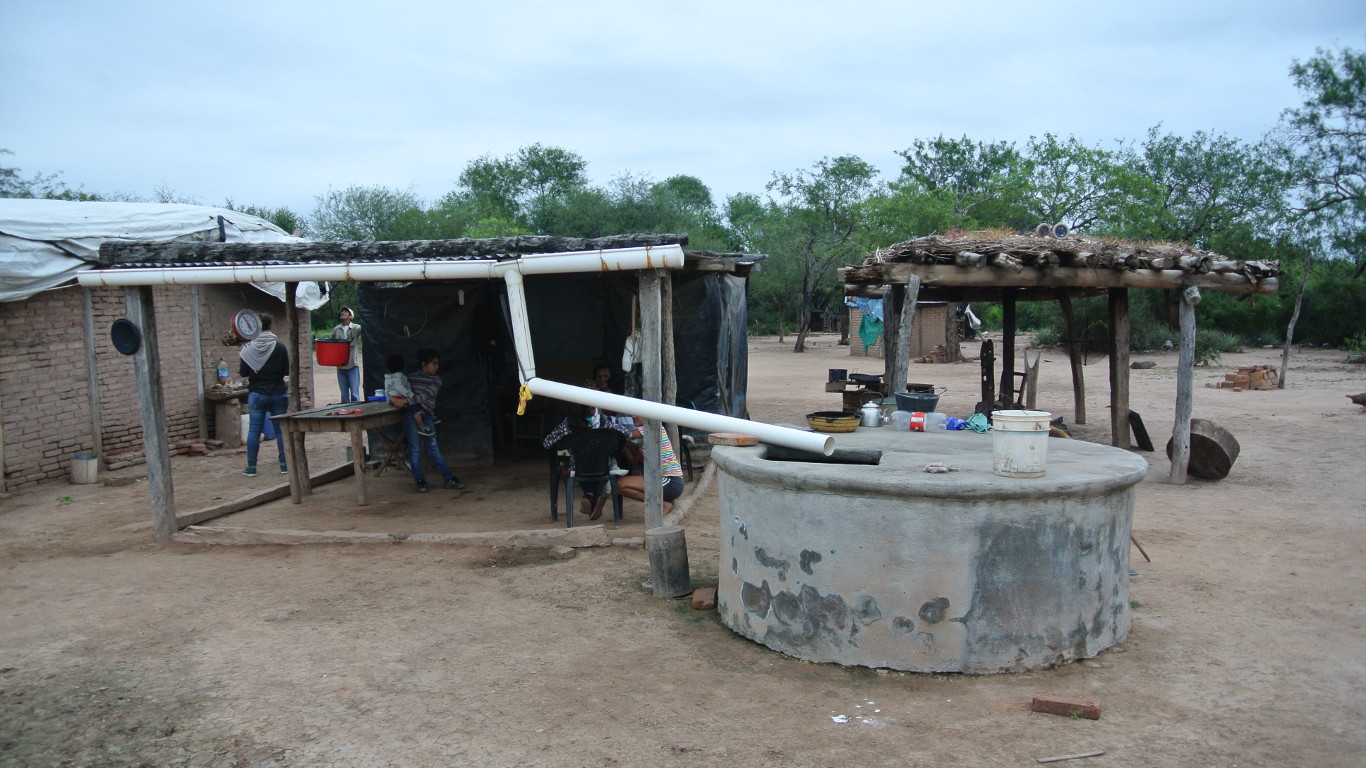In May 2010, IngOG+ received the first request for engineering support in the planning and construction of a pedestrian bridge in Talek, Kenya. We made the decision to support, and then planned and successfully implemented the bridge on site.
Situation
The Molibany River in Talek, a few hundred yards from the entrance to the Maasai Mara National Reserve, is a highly seasonal river that becomes impassable for days after heavy rains. The adjoining communities and the 1,500 Maasais then have no access to the village of Talek and its school, health center and numerous small shops. The village of Talek is vital for the supplies to the population within a radius of about 50 km.
So far the Mpuai community, which is located north of the Molibany, has been particularly affected. Representatives of the community had approached the partner organization of IngOG+, Econosphere Project (Switzerland), with the request to support the population in resolving the situation. In May 2010 IngOG + received the request for engineering support in the planning and realization of a pedestrian bridge over the Molibany River. Due to the stated necessity of the project, the willingness of IngOG + to support was great and the commitment was made in June 2010.
Quickly a team was found and Lukas Lanz, Matthias Ludin and Sandra Vecchi took over the project planning. During a 3.5 week stay in Kenya in September 2010 the construction of the footbridge on site was realised.
Planning and Realisation
The bridge was designed as a wooden construction and has a minimum span of 10m. The contacts in Talek made by Econosphere Projects were used to obtain more information about the required span, soil condition and available materials during the planning process. The communication was difficult due to the distance and the difficulty of the intercultural differences and even during planning, specific details were not easy to determine. Therefore, an attempt was made to plan the supporting structure in such a way that it could be adapted as easily as possible to the local conditions on site.
We visited Kenya for just over three weeks in September 2010. During the first two days in Nairobi, the necessary wood and vehicles as well as other supplies and work tools were organised. A truck was hired to transport the timber to the project area, which was located several hours away from Nairobi.
On September 5, 2010, the river location was visited, the river cross-section measured, the position of the abutments determined and the bridge and reference axes staked. Our team was supported on site during the entire construction period by three active Maasais from the community.
The excavation was completed within two days. The two small excavation pits had dimensions of approx. 1.5m x 1.2m x 1.2m. For the abutments, a basket with reinforcing iron and chain link fence was made, which was placed in the excavation before filling it with natural stones and mortar. The natural stones were collected on a piece of land near the bridge location and taken to the construction site by pickup truck. Building sand, cement and reinforcing steel was purchased from local dealers in Talek and the mortar was mixed by hand on site.
Around the core of the abutment, a 20 cm wide ledge and protective masonry was created. This was pulled up to the upper edge of the concrete slab (b x h x l = 1.2 m x 0.4 m x 1.0 m), serving as a bridge cradle and also as formwork. Four threaded rods for the carrier fixation were inserted in the reinforcement cage and the outer plate was concreted.
While the second abutment on the village side proceeded well the construction of the embankment protection began on the opposite side. The existing natural stone embankment protection was designed as a self-standing wall in sections made of wire mesh fence. The preparation of the abutment including almost the entire slope protection was completed on 17.09.2010.
During the work on the abutments and the slope protection, work on the bridge girders started at the Base Camp of Econosphere Projects. The girders were cut and bound there to allow easy assembly on site. On 19.09.2010, the two bridge girders were set on the abutments with the help of numerous volunteers from the community. The girders were then temporarily stabilised with distance timbers and two cross-tensioned braces.
Because of heavy rain, the work had to be stopped shortly after noon on the following day. When the rain had subsided after a few hours, we could not leave the site due to the flooded road and therefore visited the bridge. We were amazed. The river had reached just below the abutment’s edge, and a larger group of Maasais were already trying to cross the bridge (including a bicycle!), which was still not fully prepared for foot traffic. Shortly before leaving the construction site, the water stood up to both abutments and was about 30cm under the bridge girder. The next morning, with the exception of a large trickle, all the water had disappeared again. Fortunately, the two abutments as well as the embankment protection were still in perfect condition.
In the next few days we dealt with the details – the covering of the walkways, the handrails and the completion of the slope protection. After our names and those of our helpers were carved into a bar and the participating organizations were acknowledged on a sign, on 22.09.2010 the elders of the Mpuai community could begin the inauguration of the bridge. After a few speeches, the bridge was sprayed with Fanta and solemnly crossed by all representatives. The bridge was proudly handed over to the community.
Costs and Financing
Budgeted were CHF 300.- to CHF 400.- per bridge run meter. The final total cost of construction was CHF 5’145.-. Of this, CHF 2’912.- was used for construction material and wages and CHF 2’233.- for the rental and fuel of the project vehicle.
The project was more than fully funded by a donation from Gruner AG, Basel. The remaining amount will be used for the follow-up activities.
We would like to thank our partner Econosphere Projects Switzerland and the many others who have actively supported us during the planning and execution of the pedestrian bridge:
Gruner AG
4020 Basel
Heinz Oser Garden Design
4124 Schönenbuch
Louis Risi
4123 Allschwil
Academic Engineering Association
ETH Zurich


